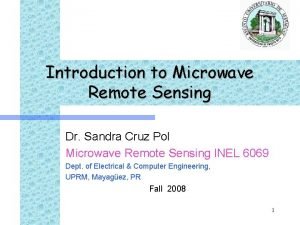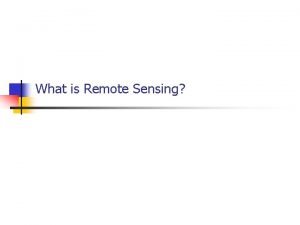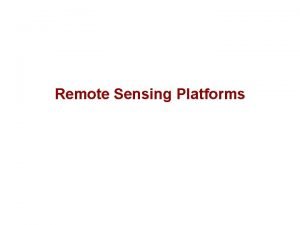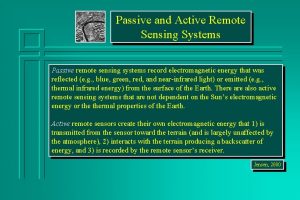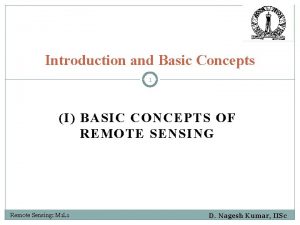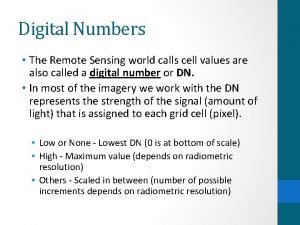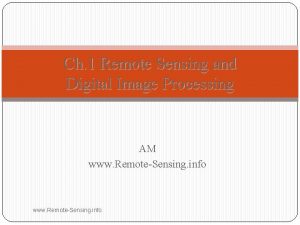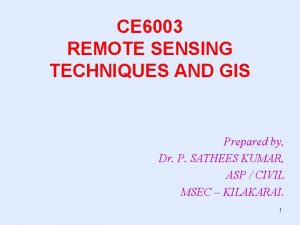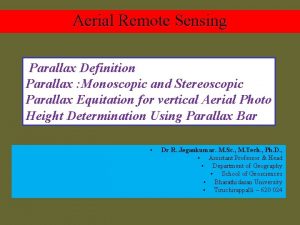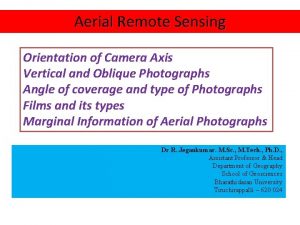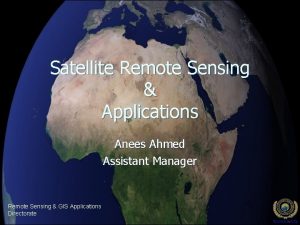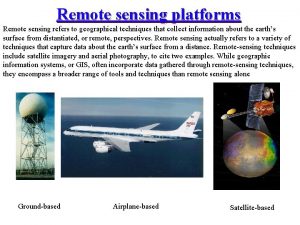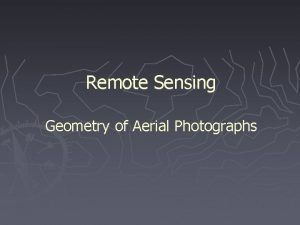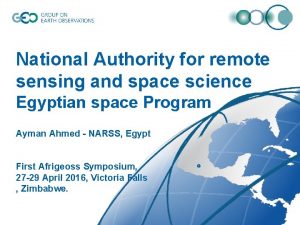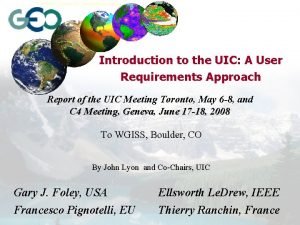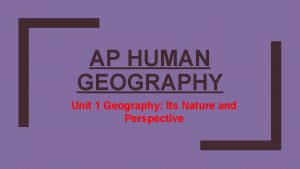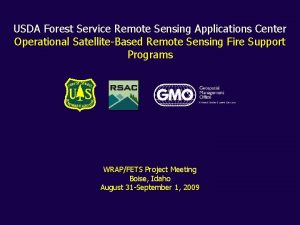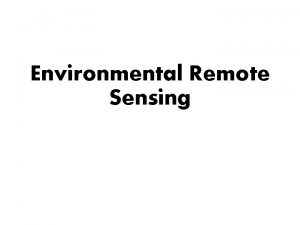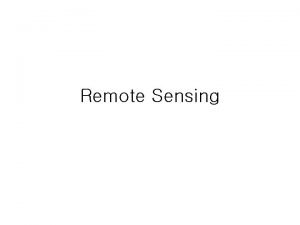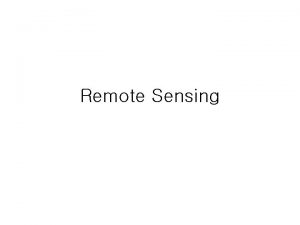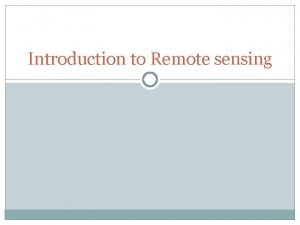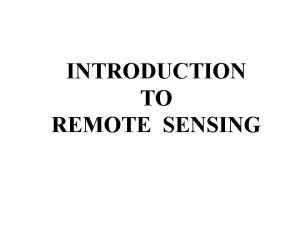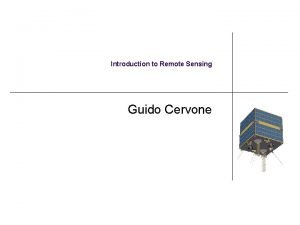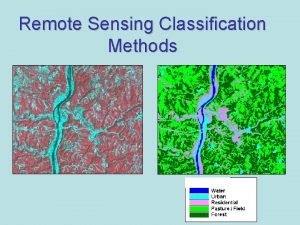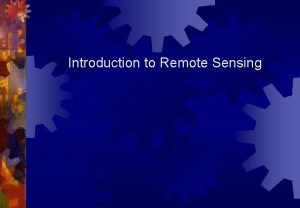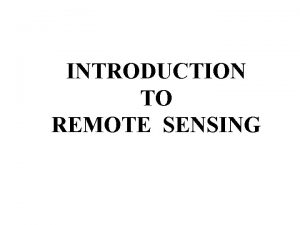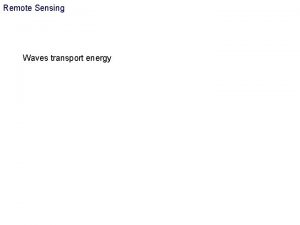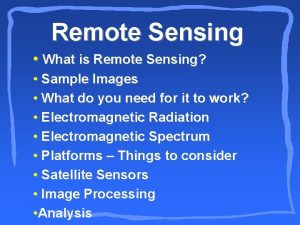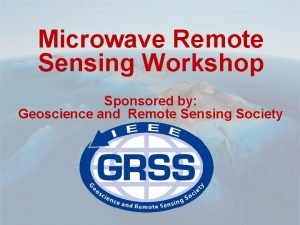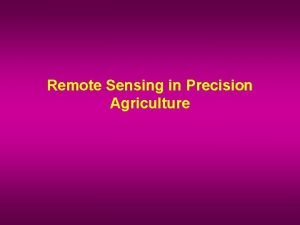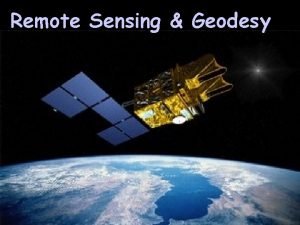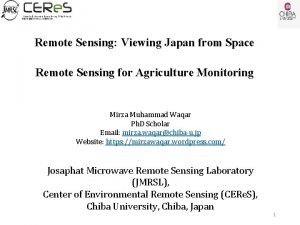Introduction to Remote Sensing Outline What is remote


















- Slides: 18

Introduction to Remote Sensing

Outline • What is remote sensing? • The electromagnetic spectrum (EMS) • The four resolutions • Image Classification • Incorporation with GIS • Sample Research

What is remote sensing? • Remote sensing is the art and science of analyzing the Earth’s surface with remotely acquired data (most often from aircraft or satellites)

Electromagnetic Spectrum

Electromagnetic Spectrum • Remote sensing instruments can collect reflectance information in a wide range of the spectrum (visible, infrared, radar) • Different features reflect various amounts of energy from different parts of the spectrum • That is how we can distinguish and separate between features.

Spectral Reflectance of common features

The Four Resolutions Spectral Resolution • Refers to the section(s) of the EMS in which reflectance information is acquired • For example, the Landsat ETM+ sensor collects: -blue -mid infrared -green -mid infrared -thermal infrared -near infrared -panchromatic

The Four Resolutions Spatial Resolution • Refers to the size of a single pixel in an image (i. e. , the area for which individual reflectance values are recorded Landsat ETM+ - 30 m IKONOS Panchromatic– 1 m

The Four Resolutions

The Four Resolutions Radiometric Resolution • Refers to the range of reflectance values recorded • For example, 8 -bit data displays values ranging 0 -255 (28=256) Temporal Resolution • Refers to how often an image of the same area is collected, as determined by the sensor’s orbit and spatial resolution

Classification • The process of converting raw imagery to thematic information • Each pixel in the image gets placed into a certain class based on its reflectance compared to other pixels

Raw Image

Classified Image

Change Detection • Using images of the same area at different times to analyze what has happened between the two dates Landsat-1985 Landsat-2000

Change Detection

GIScience • Geographical Information Sciences (i. e. , the art and science of spatial analysis) • Data collected from a variety of sources can provide input for a GIS database because (provided) they are rectified to a common spatial reference (coordinate system, datum plane, projection) (e. g. , WGS 1984, UTM, Zone 30) • This includes remotely-sensed data

Image Backdrops • While classified imagery can be used as a layer in the GIS, raw imagery is often used as a backdrop for displaying point, line and polygon information

Questions?
 Introduction to microwave remote sensing
Introduction to microwave remote sensing N-rays
N-rays Remote sensing platforms
Remote sensing platforms Passive remote sensing
Passive remote sensing Advantages of remote sensing
Advantages of remote sensing Digital number in remote sensing
Digital number in remote sensing Limitations of remote sensing
Limitations of remote sensing Idealized remote sensing system
Idealized remote sensing system Graduated symbol map definition ap human geography
Graduated symbol map definition ap human geography Choropleth map definition ap human geography
Choropleth map definition ap human geography Parallax remote sensing
Parallax remote sensing Strip camera in remote sensing
Strip camera in remote sensing Remote sensing image
Remote sensing image Ifov and fov in remote sensing
Ifov and fov in remote sensing Geometry of vertical photograph
Geometry of vertical photograph National authority for remote sensing and space sciences
National authority for remote sensing and space sciences Canadian centre for remote sensing
Canadian centre for remote sensing Distortion definition ap human geography
Distortion definition ap human geography Remote sensing applications center
Remote sensing applications center
